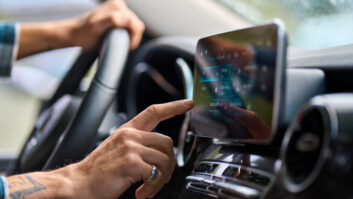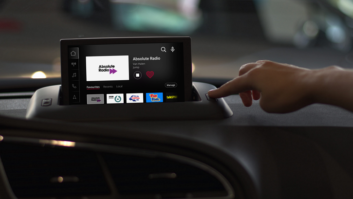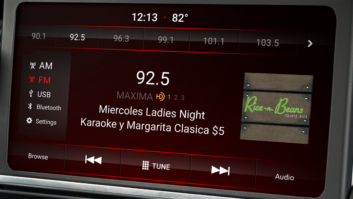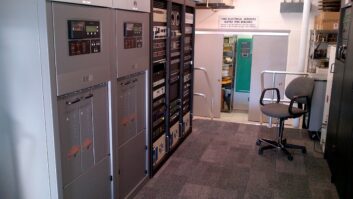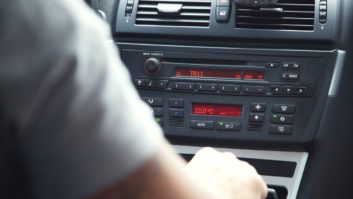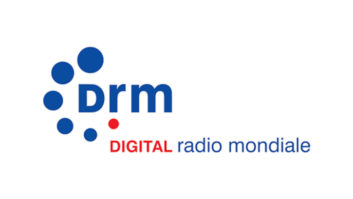
The author is product manager automotive for Fraunhofer IIS Audio and Media Technologies.
Radio, in its wide variety of formats, has long been a vital component of in-car entertainment. And it will continue to be so: Thanks to intelligent audio-processing technologies, the customer experience of in-car radio can be taken to a new level that meets the higher expectations regarding quality and variety.
SEAMLESS SWITCHING
Hybrid radio enables passengers to listen continuously to a radio station during a car ride even if they leave its coverage area. The technology combines a radio transmission — regardless of whether it is digital or traditional FM radio — with the accompanying web stream, allowing passengers to listen to their favorite radio station wherever they are. This also offers an opportunity to strengthen the connection between station and listener by removing distance as a factor — even for listeners on the road.
The tricky part is switching from the radio broadcast to the web stream: Compared to receiving a radio signal, a web stream can have a delay of 20 seconds or more, resulting in portions of the feed either being lost or played twice — like a scratch on a vinyl record that causes the needle to jump back. Both issues are highly irritating to the listener.
This is why Fraunhofer IIS developed Sonamic TimeScaling. This technology synchronizes both signals with each other to produce a precise, seamless transition.
When the system realizes that the radio signal will soon be lost, it begins connecting to the station’s web server via the vehicle’s embedded cellular modem or a smartphone connected to the car stereo. It calculates the existing offset to the web stream in order to delay the audio signal in an inaudible way. As soon as the two streams are synchronized, the system seamlessly switches to the web stream and volume levels are adjusted automatically.
This also works in reverse: When the system recognizes that the radio signal is strong enough for good reception, it can make a seamless transition from the web stream to the radio signal, keeping the amount of mobile data used for internet access low.
GOOD AUDIO, LOW BITRATES
With regard to transmission costs for streaming a radio station over the internet, broadcasters understandably prefer low or very low bitrates. To meet this demand, Fraunhofer developed the xHE-AAC audio codec.
This latest addition to the AAC codec family provides consistently high-quality audio for all signal types, such as speech, music or mixed content, and at bitrates starting as low as 12 kilobits per second for stereo services — up to 500 kbps and above. It is designed for adaptive streaming, allowing seamless bitrate switching over DASH and HLS. xHE-AAC is included in Google’s Android 9 Pie mobile operating system, with MPEG-D DRC providing mandatory loudness and dynamic range control.
[The Potential of DRM Datacasting]
If a station has not upgraded its web stream to xHE-AAC yet, low bitrates can lead to audible artifacts. Those artifacts can be minimized with Fraunhofer Sonamic Enhancement — a toolbox that carries out the required repairs and optimization in real time following an analysis. The semantic algorithms restore high-frequency signal components and others, remove scratching and roughness, and reconstruct lost auditory source width. Fraunhofer Sonamic Enhancement can work with other sources, too, such as a user’s own MP3 collection.
The solution does not require any additional information about codecs or bit rates, and high-quality audio material remains unchanged. It can process all relevant audio codecs such as MP3, AAC, AC3 or codecs used in satellite radio, so it does not matter if the playback is music, speech or mixed content. There is also no impact on the channel (streaming, satellite radio, etc.) that is receiving the audio content.
CONSISTENT VOLUME
Switching between different audio sources, or even between different radio stations, often confronts the listener with different levels of volume. This has to be adjusted manually, most often by the driver — which is not only inconvenient but presents a safety risk by briefly distracting the driver from the road.
The Sonamic Loudness technology developed by Fraunhofer can provide a remedy here, ensuring consistent volume when switching among radio stations, media sources or individual audio data sources, and thus increasing comfort and safety.
The loudness normalization works with any source, no matter if it is line-in or Bluetooth, CD, FM, digital radio or internet streaming. Depending on the source, additional information available is used for Sonamic Loudness, e.g. “next title,” “same/new CD” or “known radio station.” At the same time, the technology maintains the original dynamic range of what is played back.
If radio is chosen as the source, a previously specified loudness value is used as the starting point for normalization. This value can be determined in various ways without disturbing the user: In the case of radio, the solution can use a second tuner in the background or online updates. If there is no starting value, continuous volume measurement and adjustment are active.

IMMERSIVE SOUND
To bring immersive in-car entertainment to small, compact and midsize vehicles, Fraunhofer IIS has developed the Sonamic Panorama solution (while for large and luxury cars, it offers the Symphoria technology).
Sonamic Panorama does not require any additional hardware and separates the individual sound sources of stereo content, evenly distributing them in a U-shaped soundstage that surrounds the passengers. Side components in the stereo signal emerge behind the listener, while the mid components remain acoustically unaltered directly in front. That way, everyone in the car can appreciate details that otherwise would be imperceptible in the pure stereo signal. The playback is kept free of artifacts and is robust to FM noise and poor digital reception. So if, for example, a radio station is broadcasting a live concert by a passenger’s favorite band, they might feel as if they were right there on stage with the musicians.
With the new possibilities presented by intelligent automotive audio-processing technologies, radio listeners in cars can enjoy their favorite stations to the full — not only without any disturbances or artifacts, but even with added value.
The Fraunhofer Institute for Integrated Circuits IIS, based in Germany, is an application-oriented research institution. Its Audio and Media Technologies division offers solutions for AV streaming, TV broadcast, digital radio, mobile telephony, virtual reality and automotive.
